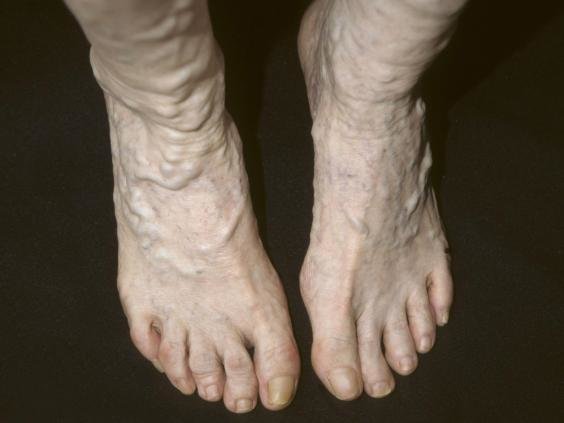
Bad postures and sedentary lifestyles have led to a rise in the number of younger people experiencing complaints such as back pain and haemorrhoids, according to analysis by Bupa.
Data from more than 60,000 medical procedures in 2015 was compiled by the private healthcare group.
It found treatment traditionally offered to older generations was increasingly being sought by younger people, aged mainly between 25 and 45 - a shift it attributed to time spent sitting at desks, watching box sets and using smartphones and tablets.
Removal of haemorrhoids and varicose veins were two of the most common procedures in the heart and circulatory diseases category for both 26 to 35-year-olds and 36 to 45-year-olds.
"Haemorrhoid removal and treatment for varicose veins are procedures that people in this age group should not be encountering," said Dr Steve Iley, Bupa's medical director in a statement.
"However, when you consider the amount of time young people now spend sat using their mobiles and tablets, streaming box sets or playing with the latest games console, you can see why these conditions are rising in this age group."
Among the five most common conditions treated in 36 to 45-year-olds were arthroscopic knee operations, a surgical technique by which a tiny camera is used to look inside the knee.
Epidural injections at the base of the spine, used to treat back pain, was also in the top five for this age group - a 10 per cent rise from 2014, a Bupa spokesperson told The Independent.
And arthroscopic knee operations were even one of the five most common procedures among 16 to 25-year-olds.
Searches for stress-related conditions on Bupa's website had also increased, it said, suggesting this could be due to longer working hours, busy schedules and a lack of ability to "switch off".
Experts have warned that repeatedly looking down at mobile phones and other devices has led to a rise in the number of young people experiencing back and neck pain.
Among 16 to 24-year-olds, 45 per cent said they were currently living with neck or back pain compared to 28 per cent of 18 to 24-year-olds asked the previous year, according to a survey by the British Chiropractic Association (BCA).
Tim Hutchful, a BCA chiropractor, said he was "concerned that the number of patients under the age of 30 coming through our doors is increasing".




The medical doctors look at a problem and come to the wrong conclusion again. Having bad posture and being lazy never has and never will cause vericose veins or hemmeroid. But the lack of proper nutrition will. It is impossible to get proper nutrition from the food you eat. Eat the healthiest diet possible, and you might get 50% of the required nutrients. This is why you must supplement to stay healthy. First and foremost, never consult a MD on nutrition, they're not trained in nutrition. You wouldn't take your car to a lawn mower repair shop, so why would you trust an MD doctor for nutrional advice. To become a medical doctor, you are required to receive ZERO, as in zip, nutrional training. On the other hand, Naturopaths are required 4 years of training. Think about that, MD (none), Naturopaths 4 YEARS!!!!!!!. People, your body is always trying to repair itself, you just have to feed it the right nutrients, and you can kiss that nutrionally untrained MD good bye. By the way, if you think exercise is the way to stay healthy, think again. Exercise will only accelerate the loss of minerals. I'm not saying don't exercise, just don't exercise without supplementation, because your sweating out more than just water. Your body requires 90 nutrients to stay healthy, the food supply will provide about half that.